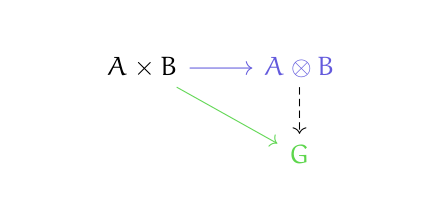Definitions via universal properties seem strange at first, even evasive. They are non-constructive, but they’re often followed up by a constructive proof that shows that they exist. So you have a pair of definitions: one that says a gadget, if it exists, is something that behaves this way, and another that says that gadgets do indeed exist, and here’s an example of how you might construct one.
All these definitions have the same flavor. In terms of color coding, they all have the form
- Given certain things,
- the thing we’re defining is something such that
- for every other thing in the same category,
- there exists a unique morphism making a diagram commute.
This page will give several examples. Based on the list above, we will color the things in (1) black, the things in (2) blue, the things in (3) green, and the thing in (4) as a dashed line.
Here “thing” typically refers to both objects and morphisms.
Universal properties are “universal” in two senses of the word. Primarily, they are universal in the sense of (3) above: universal things behave a certain way with respect to everything in a category. But in an informal sense, universal properties are “universal” in that they are common.
And now for the examples.
Products
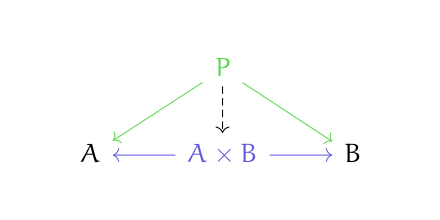
Coproducts
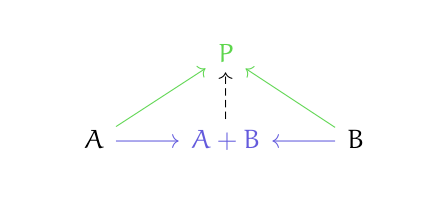
Pullbacks
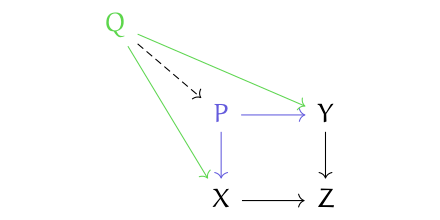
Pushouts
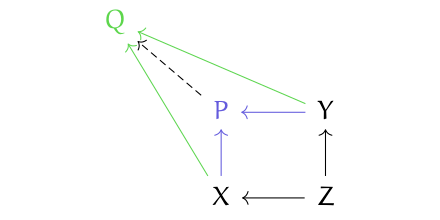
Equalizers
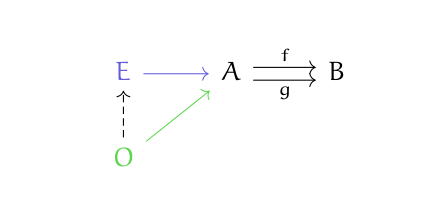
Coequalizers
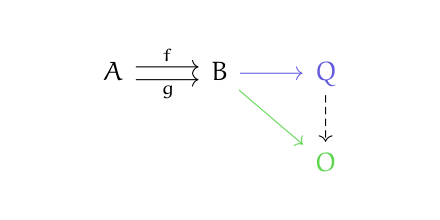
Tensor products
